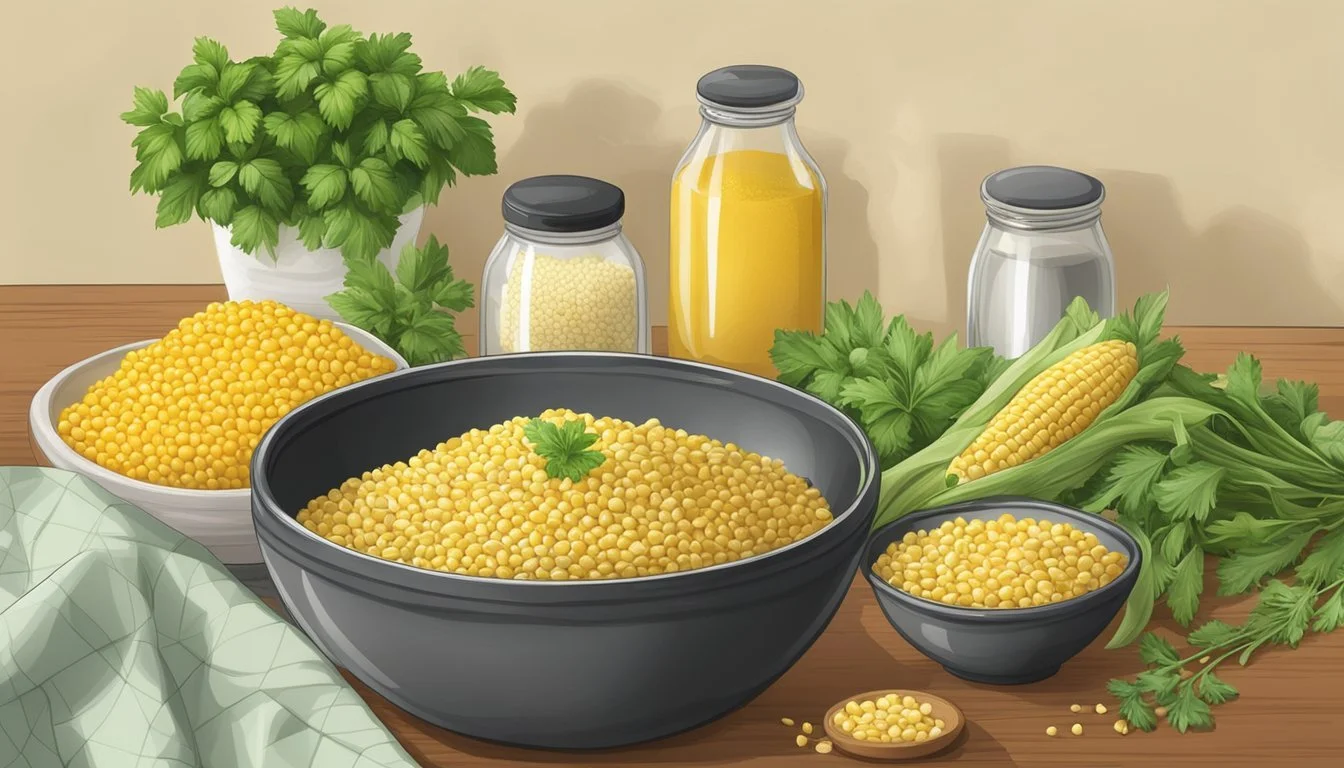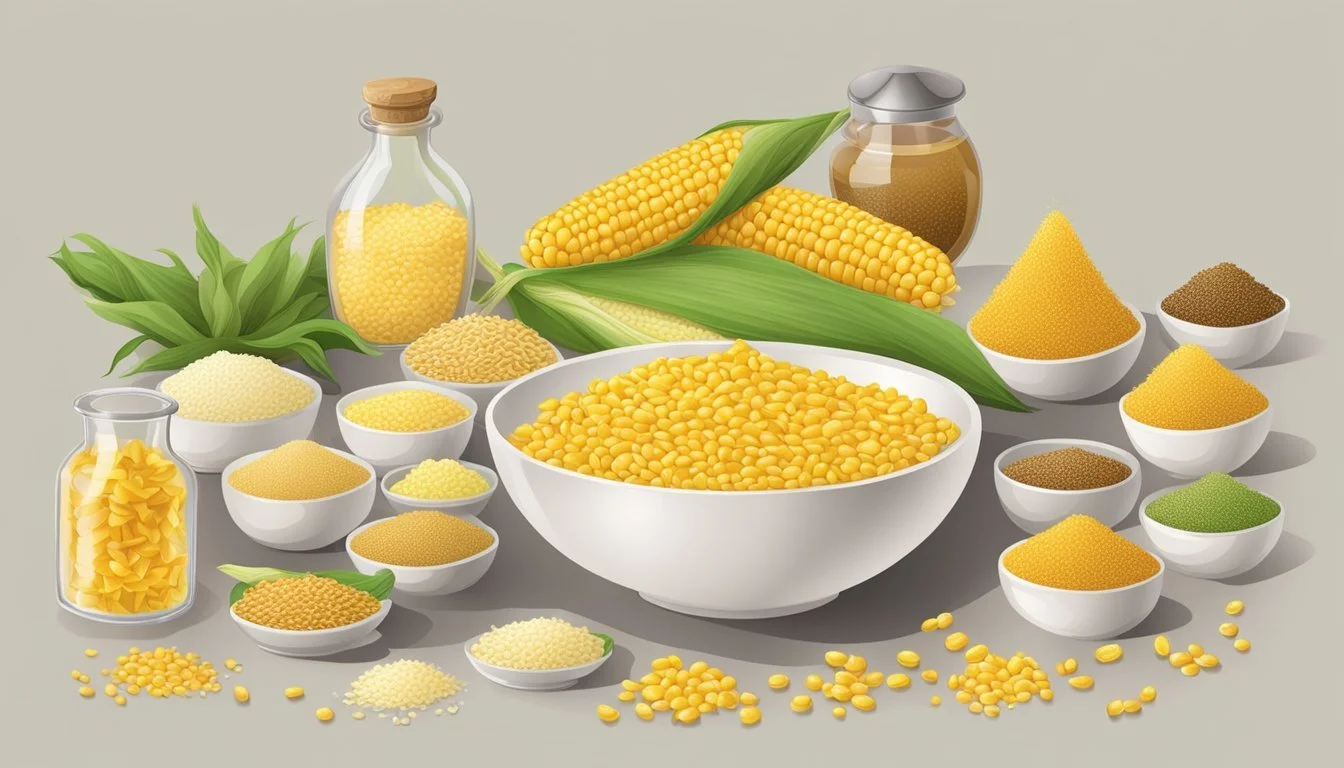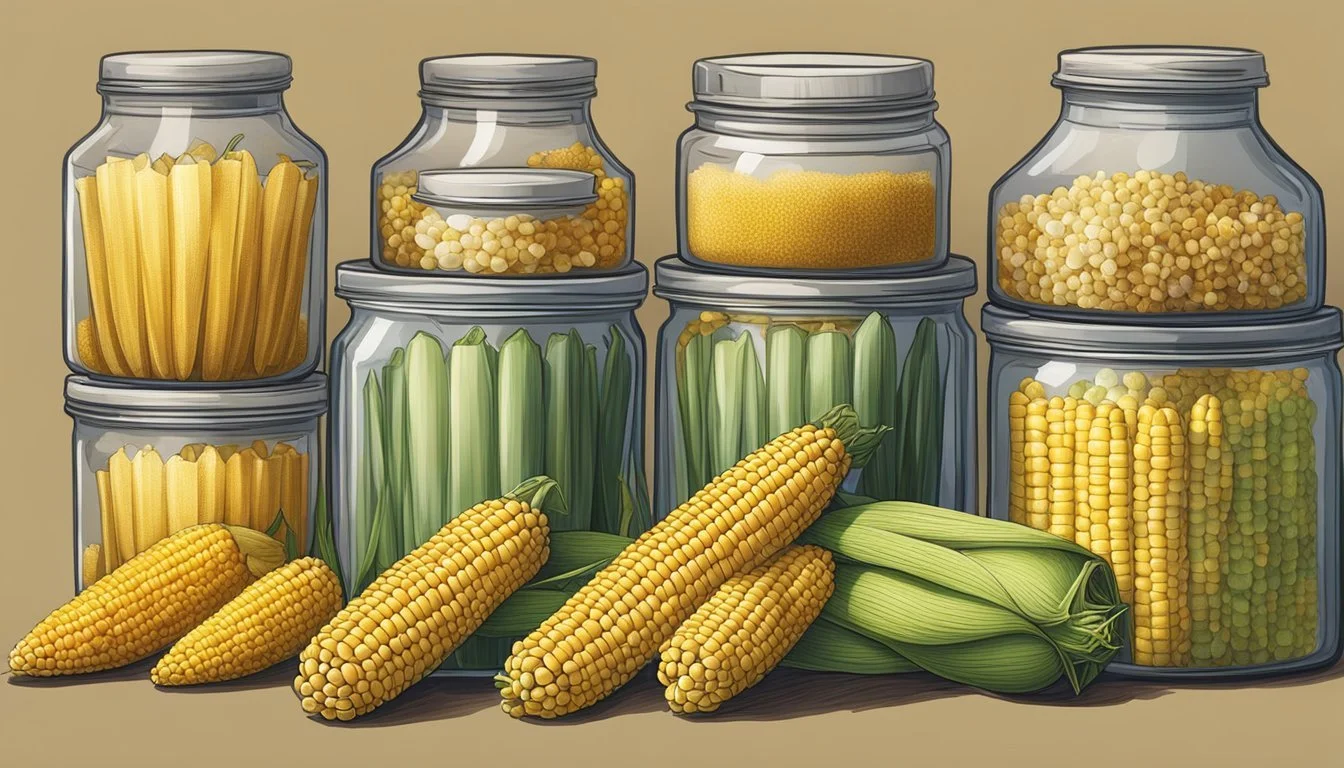Corn Silk Substitutes
Best Alternatives for Natural Remedies
For those looking to replace corn silk in their natural remedies or beauty routines, there are numerous alternatives that can be just as effective. One common substitute for corn silk in herbal teas is dried horsetail, known for its diuretic properties and high silica content, benefiting the urinary tract much like corn silk.
Moreover, in the world of cosmetics, particularly for those seeking alternatives to Corn Silk Loose Powder, products with similar translucent and mattifying effects, such as rice powder or silica-based powders, provide excellent options. These substitutes not only help in maintaining skin health but also offer the same lightweight texture and oil-absorbing qualities.
Exploring other natural remedies, marshmallow root can be employed for its soothing properties in urinary health. Just like corn silk, marshmallow root acts as a mild diuretic and can be included in homemade teas, offering a valuable replacement.
Understanding Corn Silk
Corn silk, the long, silky fibers from the top of an ear of corn, offers various nutritional components and commonly serves both culinary and medicinal purposes.
Nutritional Composition
Corn silk is a source of several nutrients. It contains potassium, an essential mineral for maintaining electrolyte balance. Calcium is present in smaller quantities, contributing to bone health. There is also fiber, aiding in digestion and maintaining gut health.
Additionally, corn silk has small amounts of protein and Vitamin C, supporting immune function. Antioxidants and flavonoids in corn silk help combat oxidative stress.
Potential Health Benefits
Corn silk has been traditionally recognized for its health benefits. It is often used as a natural remedy to support urinary tract health. Emerging research suggests that it helps maintain proper kidney function and may reduce inflammation.
Antioxidants in corn silk may contribute to overall cellular health. The presence of flavonoids could provide additional protective effects against inflammation and oxidation.
Common Uses in Cuisine and Remedies
In cuisine, corn silk can be used to make corn silk tea, known for its mild, earthy flavor and potential health benefits. To prepare it, fresh or dried corn silk is steeped in boiling water.
As a natural remedy, corn silk is employed in infusions and teas to support urinary health. It’s also integrated into traditional medicine practices for various benefits.
Corn silk can be dried and used in homemade beauty treatments. Its versatile nature makes it a valuable ingredient both in the kitchen and in home remedies.
Substitutes for Corn Silk in Cooking
When looking for alternatives to corn silk in cooking, several options are available that serve different purposes such as thickening, sweetening, and offering similar herbal benefits.
Cornstarch and Its Alternatives
Cornstarch is an effective substitute for corn silk, especially in recipes that require thickening. It provides a smooth consistency and is easy to incorporate into both hot and cold dishes.
Alternatives to cornstarch:
Arrowroot powder - Great for acidic sauces and high-heat cooking.
Potato starch - Ideal for creamy soups and gluten-free baking.
Tapioca starch - Works well in pie fillings and desserts.
Each option serves specific needs, ensuring you can customize your cooking to achieve desired textures and thickness.
Flours as Thickening Agents
Various flours can also act as substitutes for corn silk due to their thickening properties. They integrate seamlessly into recipes and enhance consistency.
Common thickening flours:
All-purpose flour - Widely available and versatile.
Rice flour - Suitable for sensitive diets.
Chickpea flour - Adds a unique flavor and gluten-free option.
When using these flours, a small amount mixed with water acts as a thickening agent. Adjust the quantities for desired results.
Natural Sweetener Options
Natural sweeteners can replace corn silk in cooking by providing similar sweetness and health benefits. They also offer diverse flavor profiles.
Popular natural sweeteners:
Honey - Provides depth of flavor; ideal for teas and desserts.
Agave syrup - Mild flavor; suitable for baking.
Maple syrup - Rich, distinctive taste; excellent for pancakes and marinades.
These sweeteners can be used in equal quantities to corn silk syrup, making them convenient choices for various recipes.
Herbal Remedies and Supplement Alternatives
For those who value the herbal aspects of corn silk, other herbs and supplements offer similar benefits. These can be incorporated into recipes or used on their own.
Alternative Herbal Remedies:
Chamomile - Known for its soothing properties; can be used in teas.
Mint - Fresh and dried forms; enhances flavor in both sweet and savory dishes.
Nettle leaf - Adds nutritional value; often used in soups and stews.
These herbs support digestive health and provide natural substitutes for corn silk in cooking.
Health Considerations for Substitutes
When opting for substitutes for corn silk, it is vital to consider various dietary, medicinal, and allergenic factors. These considerations can impact health outcomes and ensure safe consumption.
Managing Dietary Restrictions
Many individuals may require substitutes that align with dietary needs such as lower cholesterol, reduced sodium, or better management of blood sugar levels. For example, those with diabetes should consider options that have minimal impact on blood sugar. Alternatives like chickpeas are rich in fiber and can aid in more stable blood glucose levels.
Tapioca flour and arrowroot powder are lower in calories and provide better digestive support due to their higher fiber content, making them suitable for those aiming for a healthier lifestyle. Choosing substitutes with additional minerals such as zinc can also help maintain overall body function.
Interactions with Medications
Substitutes may interact with medications, particularly diuretics, anti-inflammatory drugs, or blood thinners. For instance, psyllium husk is often praised for its low-carb content and fiber, but it can affect the absorption of certain medications due to its gel-forming properties. Individuals on insulin or any blood sugar regulation medication should assess whether their substitutes will interfere with their treatment regimen.
Moreover, some substitutes, such as corn silk, possess diuretic properties and might complement urinary tract infection treatments but could also affect those on diuretic medications. It is crucial to understand these dynamics to avoid adverse effects.
Allergen Information
Allergen management is essential when selecting substitutes, especially for those sensitive to common allergens like corn. Substitutes such as arrowroot powder and tapioca flour generally have a low allergenic profile, making them safer for individuals with multiple allergies.
On the contrary, chickpeas fall under the legume family, which can pose risks for those allergic to legumes. Ensure that the selected substitute aligns with individual allergenic sensitivities to prevent allergic reactions. Reading labels and knowing the source of substitutes can help in making the right choice.
By considering these health-related factors, one can make informed decisions that maximize the benefits and minimize any potential health risks associated with using corn silk substitutes.
Role of Corn Silk and Substitutes in Different Diets
Corn silk and its substitutes play significant roles in various dietary preferences, particularly for those with specific health needs. Their use spans across gluten-free, vegan, low-sodium, and diabetic-friendly diets.
Gluten-Free and Vegan Considerations
Corn silk is naturally gluten-free and vegan, making it a fitting choice for these diets. For those needing substitutes, chickpeas and spelt offer viable options. Chickpeas, rich in protein and fiber, serve as excellent bases for soups and stews. Spelt, while not gluten-free, is an ancient grain that can replace corn in baking, adding a sweet, nutty flavor to bread and muffins.
Maintaining versatility is key. Fresh corn, frozen corn, and canned corn, when free from additives, align well with gluten-free menus. For sauces and soups, cornstarch can be replaced with potato starch or arrowroot powder, ensuring both consistency and gluten-free compliance.
Low-Sodium and Diabetic-Friendly Options
Diabetics and those on low-sodium diets must carefully select ingredients. Corn silk's diuretic properties aid in urinary health without adding sodium. Chickpeas, low-sodium and packed with protein and essential nutrients, are suitable for soups and salads.
For diabetic-friendly options, replacing corn syrup in recipes with homemade simple syrup can help control sugar intake. Utilizing substitutes like cauliflower or zucchini in recipes instead of corn can also be beneficial. These vegetables offer low-carbohydrate alternatives, crucial in managing blood sugar levels.
Incorporating these substitutes into sauces and soups adds flavor and nutrition while adhering to dietary restrictions. By integrating these ingredients thoughtfully, individuals can enjoy varied and healthy meals tailored to their dietary needs.
Seasonal Variations and Storage
Corn silk is commonly harvested and used during the summer months. Proper preservation and drying techniques ensure that corn silk maintains its beneficial properties for year-round use.
Harvesting and Usage During Summer
During summer, fresh corn is abundant, making it an ideal time to harvest corn silk. The silk can be removed from the corn as it is prepared for dishes like corn salads and tamales. Fresh corn silk can be used in teas or other remedies shortly after harvesting, ensuring the maximum nutritional benefit.
Use clean, dry hands to handle the silk and ensure it is free from any residual pesticides. Fresh corn silk should be used within a few days to retain its potency. If needed, refrigerate it wrapped in a slightly damp towel to keep it fresh for a bit longer.
Preservation and Drying Techniques
To store corn silk for extended periods, drying is essential. Lay the corn silk in a single layer on a clean, dry surface. Allow it to air-dry in a cool, dark place for about a week or until fully dry. Alternatively, a dehydrator set to a low temperature can speed up the process.
Once dried, store the corn silk in an airtight container. Glass jars, vacuum-sealed bags, or resealable plastic bags work well. Keep the containers in a cool, dark place to maintain quality. Proper packaging prevents moisture and light exposure, which can degrade the silk's beneficial properties.
Drying and proper storage techniques ensure that corn silk remains available and effective for use beyond the summer season.
Complementary Ingredients and Pairings
Corn silk offers versatility and numerous uses in food preparation. When pairing with corn products, consider how flavors and textures interact to enhance your dishes.
Matching Flavors and Textures
Complementing the mild sweetness of corn silk can be achieved with ingredients high in potassium and iron. Items like black beans, tomatoes, and zucchini, which provide a hearty contrast, are excellent choices.
Herbs such as cilantro and parsley bring a fresh note, while spices like smoked paprika and chipotle can introduce a depth and smokiness. Balance the lightness of corn silk with creamy sauces or cashew cream to elevate the overall sensory experience.
Ingredient Flavor Profile Black Beans Earthy, Mildly Sweet Tomatoes Tangy, Juicy Zucchini Mild, Slightly Sweet Smoked Paprika Smoky, Slightly Sweet
Enhancing Dishes with Corn Products
To enhance stews and savory dishes, consider integrating cornbread or corn muffins. These items pair well due to their complementary texture and flavor that harmonize with a variety of accompaniments.
A dairy-free chicken corn chowder made with buttermilk adds creaminess and depth. This can blend exceptionally well, offering a nuanced flavor profile. Also, experiment with items like corn fritters, which can provide a crispy texture that contrasts with the soft silk.
For cold salads, zucchini corn salad or black bean and corn salad can bring a delightful crunch and vibrant taste to your meal. This makes the dish not only nutritious but also visually appealing and flavorful.
Culinary Applications Beyond Substitution
Corn silk is not only a substitute but can also enhance a variety of dishes. Its versatility extends to soups, sauces, salads, and baking, providing unique textures and flavors.
Integrating in Recipes: Soups, Sauces, and Salads
Corn silk can be used to add texture and subtle flavor to soups and stews. When boiled, it releases a slightly sweet aroma which can complement chicken or vegetable broths.
In sauces, corn silk can act as a natural thickener. It works similarly to cornstarch but with a milder taste. This makes it suitable for delicate sauces where a subtle consistency change is desired without overpowering the existing flavors.
For salads, dried and finely chopped corn silk can be sprinkled on top to add a crunchy texture. It pairs well with fresh greens and vinaigrettes, providing an unexpected element that enhances the overall eating experience.
Baking Alternatives: Cornmeal and Flour Options
Corn silk can also find its place in baking, especially when traditional ingredients like cornmeal or flour need replacement.
Ground corn silk can be mixed with all-purpose flour or corn flour to introduce a new texture. It can act as a delicate thickener in cake batters, giving a slight corn-like aroma without the density of cornmeal.
For gluten-free options, combining corn silk with rice flour or potato starch can mimic the texture of regular flour mixes. These combinations can be used in muffins, pancakes, and bread recipes, offering a light and airy crumb, which stands out in gluten-free baking.
Corn silk, therefore, provides not just an alternative but an enhancement, enriching recipes with its unique qualities.









